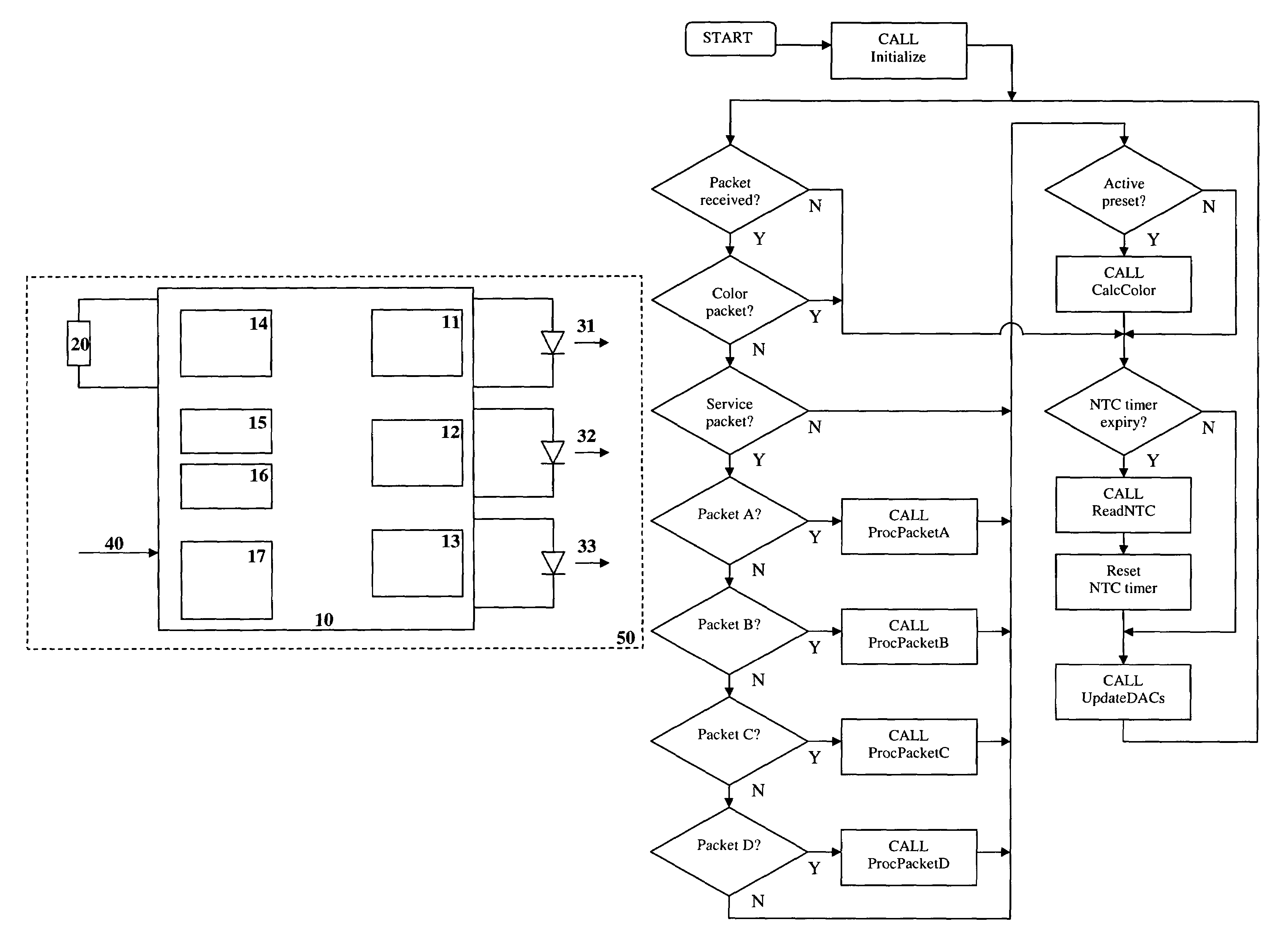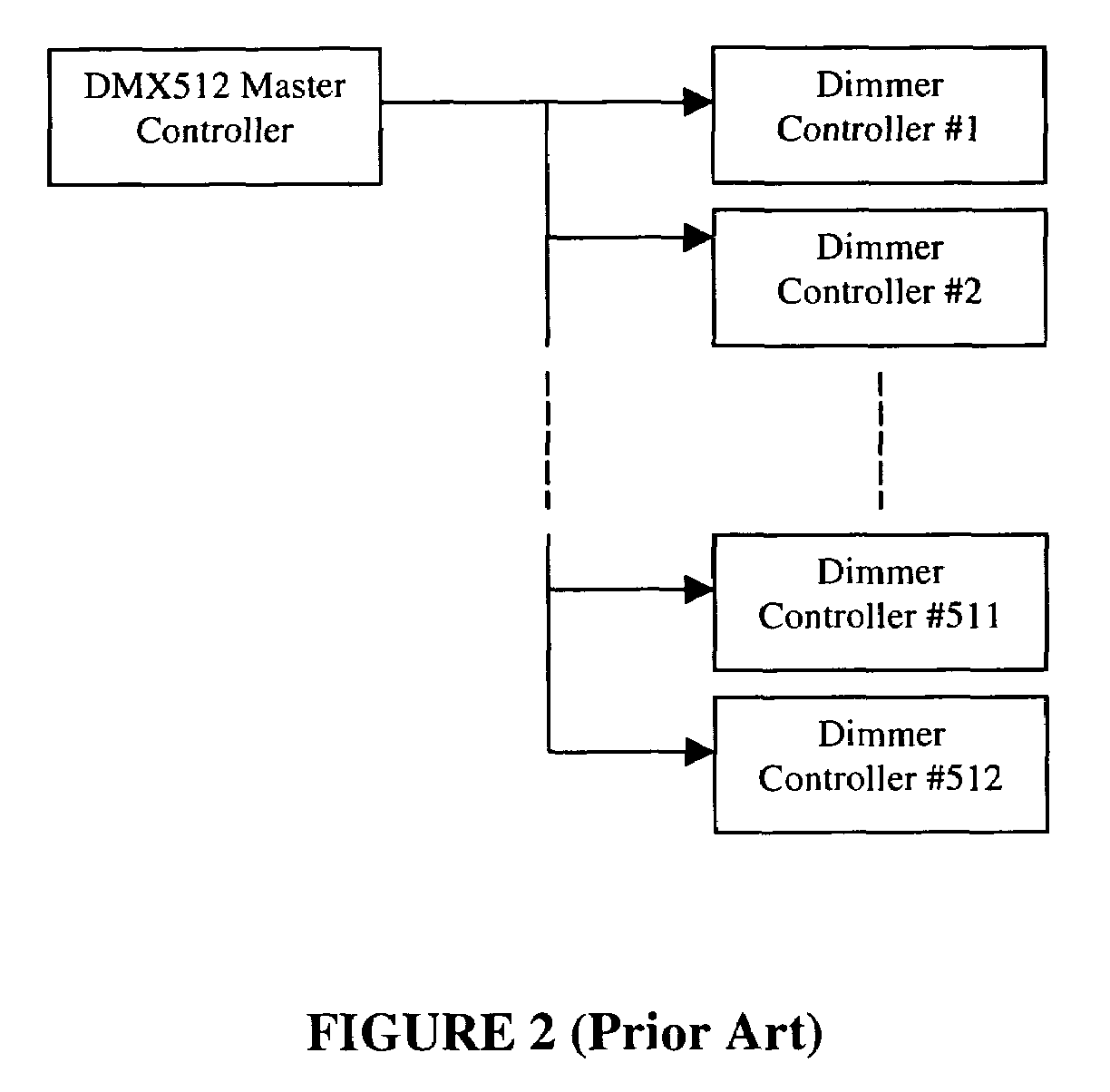System and method for controlling luminaires
a technology of lighting system and control method, applied in the field of lighting, can solve the problems of dmx512 protocol not supporting hierarchical data transmission, dmx512 protocol not supporting multiple interpretation of data stream, and dmx512 protocol not supporting remote querying of dimmer control address, and not supporting autonomous synchronized color fading
- Summary
- Abstract
- Description
- Claims
- Application Information
AI Technical Summary
Benefits of technology
Problems solved by technology
Method used
Image
Examples
example
[0089]The following example illustrates one embodiment of the detailed behaviour and steps performed for the embodiment of the present invention illustrated in FIG. 4. This behaviour and steps performed is illustrated by means of a series of flow charts representing the functional operation of a lighting system controlled by a data stream configured according to one embodiment of the present invention.
[0090]Referring to FIG. 5, the controller 10 enters the executive function Main upon energization and immediately calls the subroutine Initialize (FIG. 6) to initialize the controller before entering an infinite loop that is repeatedly executed until the controller is de-energized. Main then repeatedly checks the output of the serial port 17 for the presence of a DMX512 data packet. If a valid data packet has not been received, Main determines whether the periodic NTC thermistor timer expired. If the timer has expired, Main calls the subroutine ReadNTC to determine the current temperat...
PUM
 Login to View More
Login to View More Abstract
Description
Claims
Application Information
 Login to View More
Login to View More - R&D
- Intellectual Property
- Life Sciences
- Materials
- Tech Scout
- Unparalleled Data Quality
- Higher Quality Content
- 60% Fewer Hallucinations
Browse by: Latest US Patents, China's latest patents, Technical Efficacy Thesaurus, Application Domain, Technology Topic, Popular Technical Reports.
© 2025 PatSnap. All rights reserved.Legal|Privacy policy|Modern Slavery Act Transparency Statement|Sitemap|About US| Contact US: help@patsnap.com



